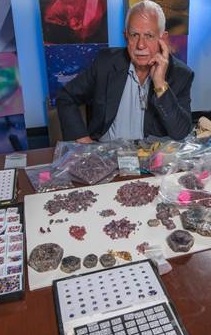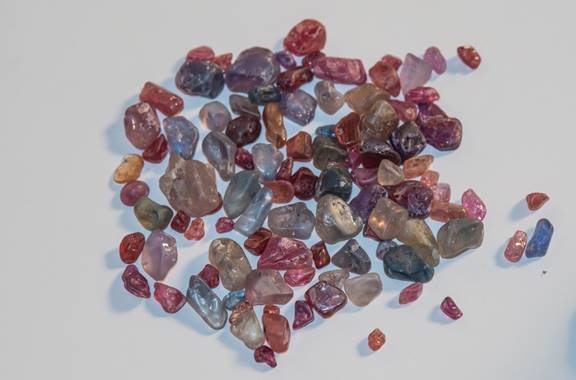Since they were discovered, Umba sapphires have captivated traders and jewelers with their amazing and unique colors (especially orange).
In the mid-sixties, George Papaeliopoulos, a Greek sisal farmer living in Africa, discovered a sapphire deposit along with rhodolite, malaya garnets and emeralds near the Umba River in Tanzania. Having no background in gemology nor the gem industry, he took the stones with him to the well-known gem trading center of Idar Oberstein.
He met there Mr. Eugene Naftule, a gemstones trader, who offered him to buy his rough. They came to an exclusive agreement whereby Mr. Papaeliopoulos would export the rough from Tanzania and the Naftule family would cut it at their workshops in Geneva and Shannon (Ireland). At that time the cut gems ranged in size from melee to very large stones often exceeding 50 carats. The exceptional stones garnered interest from many of the major jewelry houses.
Some Umba sapphires display a color change effect reminiscent of alexandrite’s, changing from light violet-red to light green depending on the light source. Umba sapphires are mainly known for their range of orange-red, orange, and orangy golden yellow colors. These unique colors are due to various coloring elements including chromium, manganese, iron , titanium, and high proportions of vanadium.
It should be noted that Umba sapphires, unlike most other sapphires, are virtually never treated, which makes them very unique and extremely rare.
In 1971, Tanzania decided to put an end to the export of its gemstones. George Papaeliopoulos left Tanzania, which ended the agreement between him and the Naftule family. The export of gemstones resumed several years later and although efforts have been made to mine corundum in the Umba area they have been largely unsuccessful.
Today, thanks to an agreement with Roland Naftule, the PIAT House continues to offer these untreated gems. Colors range from orange, orange red, pink, yellow-gold, blue, purple, green and alexandrite-like. We appreciate the history and traceability of these unique natural gems.



